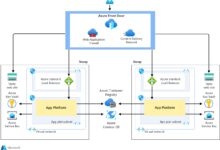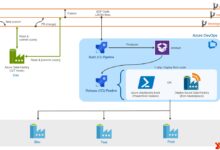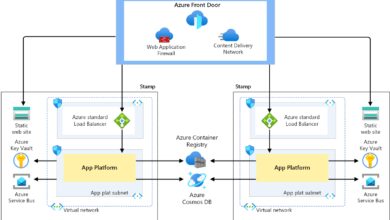Azure Log In: 7 Ultimate Tips for Secure & Fast Access
Logging into Azure doesn’t have to be complicated. Whether you’re a developer, IT admin, or business user, mastering the azure log in process is your first step toward seamless cloud management. Let’s break it down—simply, securely, and smartly.
Azure Log In: Understanding the Basics

Before diving into advanced features, it’s essential to understand what an azure log in actually entails. Microsoft Azure is a cloud computing platform offering a wide range of services, including virtual machines, databases, AI tools, and more. To access these services, users must authenticate through a secure login process. The azure log in is the gateway to managing resources, monitoring performance, and deploying applications across Microsoft’s global network.
What Is Azure Log In?
The term azure log in refers to the authentication process that allows users to access their Microsoft Azure portal, services, or applications. This typically involves entering credentials such as a username (usually an email) and password associated with a Microsoft account or an Azure Active Directory (Azure AD) account. Depending on the organization’s security policies, additional verification steps like multi-factor authentication (MFA) may also be required.
- It grants access to the Azure portal (portal.azure.com).
- It supports various identity types, including personal Microsoft accounts and work/school accounts.
- It integrates with Azure AD for centralized identity and access management.
For individuals, logging in to Azure might mean accessing personal projects or learning environments. For enterprises, it’s part of a broader identity strategy involving thousands of users, applications, and devices. Microsoft provides multiple ways to perform an azure log in, ensuring flexibility without compromising security.
Types of Accounts Used in Azure Log In
There are primarily two types of accounts used during the azure log in process: Microsoft personal accounts and organizational (work or school) accounts. A Microsoft personal account is typically an Outlook.com, Hotmail.com, or Live.com email address linked to a personal Microsoft profile. These are often used by individuals experimenting with Azure’s free tier or small-scale deployments.
On the other hand, organizational accounts are managed through Azure Active Directory and are assigned by companies or educational institutions. These accounts are more secure, support role-based access control (RBAC), and can be integrated with on-premises directories via Azure AD Connect. When performing an azure log in with an organizational account, users benefit from enterprise-grade security policies, conditional access rules, and centralized administration.
“Understanding the difference between personal and work accounts is crucial for proper access management in Azure.” — Microsoft Azure Documentation
Step-by-Step Guide to Perform Azure Log In
Performing an azure log in is a straightforward process, but knowing the correct steps ensures you avoid common pitfalls like locked accounts or authentication errors. Whether you’re accessing the Azure portal for the first time or managing multiple subscriptions, this guide will walk you through each phase of the login journey.
How to Log In to the Azure Portal
To begin the azure log in process, navigate to portal.azure.com, the official entry point for the Azure management dashboard. On the login page, enter your email address or phone number associated with your Microsoft or Azure AD account. After submitting your username, you’ll be prompted to enter your password.
If multi-factor authentication (MFA) is enabled—which is highly recommended—additional verification will be required. This could include approving a notification through the Microsoft Authenticator app, entering a code sent via SMS, or using a hardware token. Once authenticated, you’ll be redirected to the Azure dashboard, where you can view your resources, manage subscriptions, and launch new services.
- Always use a secure connection (HTTPS) when logging in.
- Bookmark the official Azure portal URL to avoid phishing sites.
- Clear browser cache if login issues persist.
Troubleshooting Common Azure Log In Issues
Even with a simple process, users sometimes encounter problems during the azure log in. One of the most frequent issues is being locked out due to too many failed attempts. This can happen if you’ve entered the wrong password multiple times or if your account has been temporarily disabled by an administrator.
Another common problem is receiving the message “This account has been disabled.” In such cases, contact your Azure AD administrator to verify your account status. If you’re using MFA and don’t receive a verification code, check your phone’s signal, ensure the Microsoft Authenticator app is updated, or request a call instead of SMS.
Browser-related issues can also interfere with the azure log in experience. Using outdated browsers, disabling cookies, or having aggressive ad blockers can prevent proper authentication. Try switching to a supported browser like Microsoft Edge, Google Chrome, or Firefox, and disable extensions temporarily to test connectivity.
“Over 60% of Azure login issues are resolved by clearing browser data or switching devices.” — Azure Support Team
Security Best Practices for Azure Log In
Security should be the top priority when dealing with cloud platforms. Every azure log in represents a potential entry point for attackers, especially if weak passwords or unsecured devices are involved. Implementing robust security practices not only protects your data but also ensures compliance with industry standards like GDPR, HIPAA, or ISO 27001.
Enable Multi-Factor Authentication (MFA)
One of the most effective ways to secure your azure log in is by enabling Multi-Factor Authentication (MFA). MFA requires users to verify their identity using two or more methods: something they know (password), something they have (phone or token), or something they are (biometrics).
In Azure, MFA can be configured through Azure AD. Administrators can enforce MFA for all users or apply conditional access policies based on risk level, location, or device compliance. For example, MFA can be required when logging in from an unfamiliar IP address or when accessing sensitive data.
- MFA reduces the risk of account compromise by up to 99.9%.
- Users can choose from multiple verification methods: app notifications, SMS, phone calls, or FIDO2 security keys.
- Conditional Access policies allow granular control over when MFA is triggered.
Microsoft strongly recommends enabling MFA for all users, especially those with administrative privileges. Without MFA, even strong passwords can be vulnerable to phishing, brute force attacks, or credential stuffing.
Use Conditional Access Policies
Conditional Access is a powerful feature in Azure AD that allows organizations to automate access control decisions based on specific conditions. These policies are applied during the azure log in process and can block, allow, or require additional verification steps depending on context.
For instance, a policy can be set to deny access if the user is logging in from a country not on the approved list, or if the device is not compliant with corporate security standards. Another common rule requires MFA when accessing high-risk applications like the Azure portal or Microsoft 365 admin center.
Creating effective Conditional Access policies involves defining the following components:
- Users and groups: Who the policy applies to.
- Cloud apps: Which services are protected (e.g., Azure Management, Office 365).
- Conditions: When the policy is enforced (e.g., sign-in risk, device platform, location).
- Access controls: What action to take (e.g., require MFA, block access, require compliant device).
These policies are essential for Zero Trust security models, where trust is never assumed, and every azure log in is verified dynamically.
Managing Multiple Azure Subscriptions During Log In
Many users, especially in enterprise environments, manage multiple Azure subscriptions. These can represent different departments, projects, or environments (development, testing, production). Understanding how to navigate between them during and after the azure log in process is critical for efficient resource management.
How to Switch Between Azure Subscriptions
After completing the azure log in, users with access to multiple subscriptions can switch between them using the subscription filter in the Azure portal. Click on your profile icon in the top-right corner, then select “Switch directory” or “Change directory” to move between Azure AD tenants. Within a tenant, use the subscription dropdown in the top navigation bar to select the desired subscription.
Each subscription operates as a separate billing and administrative boundary. Resources in one subscription are isolated from others unless explicitly connected via VNet peering, private endpoints, or cross-subscription policies. Administrators can assign different roles and permissions per subscription using Role-Based Access Control (RBAC).
- Use management groups to organize subscriptions hierarchically.
- Apply policies at the management group level for consistent governance.
- Leverage Azure Lighthouse for cross-tenant management in MSP scenarios.
Best Practices for Multi-Tenant Log In
In complex environments, users often need to log in to multiple Azure AD tenants—for example, a corporate tenant and a client’s tenant. This is common among consultants, managed service providers (MSPs), and cloud architects. To streamline the azure log in across tenants, consider using Azure Lighthouse, which enables delegated resource management.
Alternatively, users can add guest accounts to external tenants, allowing them to access resources without needing separate credentials. However, this requires proper invitation and consent procedures. Once added, users can switch between tenants directly from the Azure portal or use the az login command in Azure CLI with the --tenant parameter.
To avoid confusion, label your accounts clearly in your browser or password manager (e.g., “Work – Contoso”, “Client – Fabrikam”). Also, use private browsing sessions or separate profiles when working across tenants to prevent accidental access or data leakage.
“Managing multiple tenants securely starts with disciplined identity hygiene and clear access boundaries.” — Azure Security Best Practices Guide
Azure Log In for Developers: CLI, SDK, and Automation
While the web-based azure log in is ideal for administrators, developers often prefer programmatic access using tools like Azure CLI, PowerShell, or SDKs. These methods allow for automation, scripting, and integration into CI/CD pipelines, making them essential for DevOps workflows.
Using Azure CLI for Log In
The Azure Command-Line Interface (CLI) is a cross-platform tool for managing Azure resources. To perform an azure log in via CLI, run the command az login in your terminal. This opens a browser window where you complete the standard authentication process. Once logged in, the CLI stores your credentials securely and allows you to run commands against your subscriptions.
For non-interactive scenarios (e.g., in scripts or build agents), you can use service principals or managed identities. A service principal is an app registration in Azure AD that acts as a robot account with defined permissions. You can log in using az login --service-principal with a client ID, secret, and tenant ID.
- Use
az account listto view accessible subscriptions. - Set the active subscription with
az account set --subscription "Subscription Name". - Log out with
az logoutwhen done.
The Azure CLI supports over 100 services and is updated monthly. It’s available on Windows, macOS, and Linux, making it a versatile choice for developers and automation engineers.
Authentication in Azure SDKs
Azure Software Development Kits (SDKs) are available for popular languages like Python, JavaScript, Java, and .NET. These SDKs require authentication before making API calls. The most common method is using DefaultAzureCredential, which automatically tries multiple authentication options in sequence: environment variables, managed identities, Azure CLI, and interactive browser login.
For production applications, it’s recommended to use managed identities or service principals rather than storing credentials in code. Managed identities eliminate the need to manage secrets and automatically handle token acquisition and renewal.
Example in Python:
from azure.identity import DefaultAzureCredential
from azure.mgmt.compute import ComputeManagementClient
credential = DefaultAzureCredential()
compute_client = ComputeManagementClient(credential, subscription_id="your-subscription-id")
This approach ensures secure and scalable azure log in for applications running in Azure or on-premises.
Single Sign-On (SSO) and Azure Log In Integration
Single Sign-On (SSO) simplifies the azure log in experience by allowing users to authenticate once and gain access to multiple applications without re-entering credentials. This is particularly valuable in enterprise environments where employees use dozens of cloud services daily.
How SSO Works with Azure AD
Azure Active Directory is a leading identity provider that supports SSO for thousands of pre-integrated applications, including Salesforce, Dropbox, and ServiceNow. When SSO is configured, users log in to Azure AD once, and their session is used to authenticate to other apps automatically.
There are several SSO methods supported by Azure AD:
- SAML-based SSO: Uses Security Assertion Markup Language to exchange authentication data between identity providers and service providers.
- OpenID Connect / OAuth 2.0: Modern protocols used by web and mobile apps for secure authorization.
- Password-based SSO: For legacy apps that don’t support modern protocols; Azure AD stores and auto-fills credentials.
When a user attempts an azure log in while already authenticated to Azure AD, the system recognizes the session and grants access without prompting for credentials again. This improves user experience and reduces password fatigue.
Setting Up SSO for Custom Applications
Organizations can also configure SSO for custom or in-house applications using Azure AD App Registrations. By registering an app in Azure AD, you can define its redirect URIs, grant permissions, and configure authentication flows.
The process involves:
- Registering the application in the Azure portal under “App registrations”.
- Configuring redirect URIs and granting API permissions.
- Downloading the app manifest or using Microsoft Identity Platform (v2.0) endpoints.
- Integrating the login flow using MSAL (Microsoft Authentication Library).
Once set up, users can perform a seamless azure log in to the custom app using their corporate credentials, with full support for MFA and Conditional Access.
“SSO reduces login time by up to 45% and significantly improves security posture.” — Gartner Research
Monitoring and Auditing Azure Log In Activities
Security doesn’t end at authentication. Monitoring every azure log in attempt—successful or failed—is critical for detecting suspicious behavior, investigating breaches, and meeting compliance requirements. Azure provides robust logging and auditing tools to track user activity across the platform.
Using Azure Monitor and Log Analytics
Azure Monitor is a comprehensive service that collects telemetry from Azure resources, including sign-in logs. By integrating with Log Analytics, you can query, visualize, and alert on login events in real time.
To view sign-in logs, navigate to the Azure portal > Azure Active Directory > Monitoring > Sign-in logs. Here, you can filter by user, app, status (success/failure), IP address, and risk level. You can also export logs to a storage account or stream them to a SIEM tool like Splunk or Microsoft Sentinel.
- Monitor for impossible travel (logins from distant locations in short time).
- Set alerts for multiple failed logins from the same IP.
- Track MFA usage and compliance across users.
Log Analytics workspaces allow you to create custom queries using Kusto Query Language (KQL). For example:
SigninLogs
| where ResultType == "50140"
| project UserDisplayName, IPAddress, Location, FailureReason
This query identifies all MFA-required sign-ins that were blocked due to missing second factor.
Implementing Identity Protection
Azure AD Identity Protection is a premium feature that uses machine learning to detect risky sign-in behaviors and compromised accounts. It assigns a risk score to each azure log in attempt based on factors like anonymous IP addresses, unfamiliar locations, or malware-linked devices.
Risk policies can be configured to automatically respond to threats—for example, requiring MFA for medium-risk logins or blocking high-risk attempts entirely. Identity Protection also provides user risk detection, flagging accounts with leaked credentials found on the dark web.
Key benefits include:
- Real-time risk detection and remediation.
- Automated investigation and response workflows.
- Integration with Microsoft Defender for Cloud.
For organizations serious about security, Identity Protection is a must-have layer on top of standard azure log in procedures.
How do I recover my Azure account if I can’t log in?
If you’re unable to log in to your Azure account, start by visiting the Microsoft password reset page. Follow the steps to verify your identity using a recovery email, phone number, or security questions. If you’re using an organizational account, contact your Azure AD administrator to reset your password or unlock your account. You can also use the Azure portal’s “Can’t access your account?” link for guided troubleshooting.
Can I use social identities to log in to Azure?
No, Azure does not support direct social logins (like Google or Facebook) for the Azure portal. However, Azure AD B2C (Business-to-Customer) allows applications to accept social identities as part of customer identity management. For administrative access, only Microsoft accounts and Azure AD accounts are supported.
What is the difference between Azure AD and Microsoft Account log in?
A Microsoft Account is a personal identity (e.g., @outlook.com) used for consumer services like OneDrive or Xbox. Azure AD is an enterprise identity service used for business applications and cloud resources. While both can be used for azure log in, Azure AD offers advanced features like group policy management, conditional access, and hybrid identity integration.
How do I enable MFA for my Azure account?
To enable MFA, log in to the Azure portal, go to Azure Active Directory > Users > Multi-Factor Authentication. Select your user account and enable MFA. Follow the setup wizard to register your phone or authenticator app. For organizations, MFA can be enforced via Conditional Access policies under Security > Conditional Access.
Is there a mobile app for Azure log in?
Yes, the Microsoft Authenticator app enhances the azure log in experience by providing push notifications for MFA. Additionally, the Azure app (available on iOS and Android) allows you to monitor resources, receive alerts, and manage services on the go. While it doesn’t replace the full portal, it complements the login and management workflow.
Mastering the azure log in process is essential for anyone working with Microsoft’s cloud platform. From basic portal access to advanced developer workflows and enterprise security, every aspect of Azure begins with authentication. By following best practices—like enabling MFA, using Conditional Access, and monitoring sign-in logs—you can ensure secure, efficient, and scalable access to your cloud resources. Whether you’re a beginner or a seasoned pro, taking control of your azure log in is the first step toward cloud excellence.
Further Reading:









